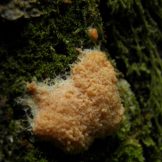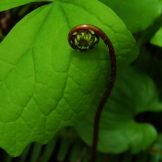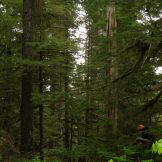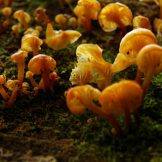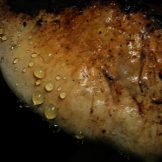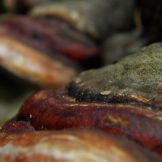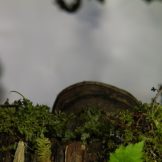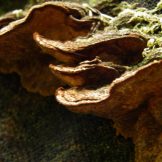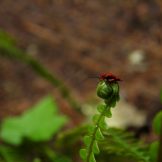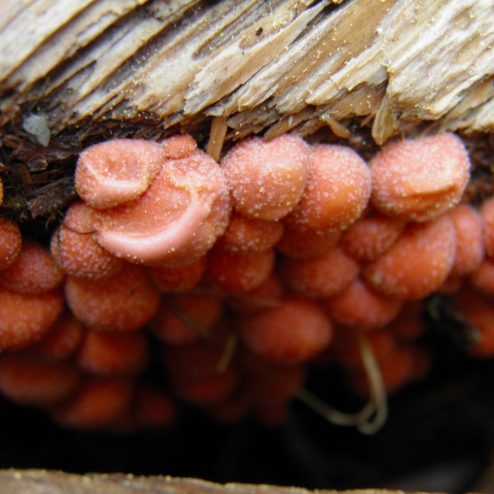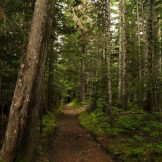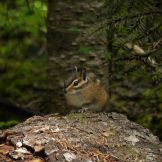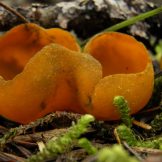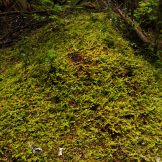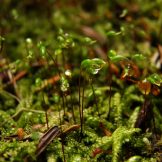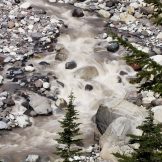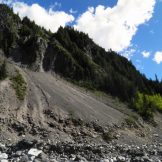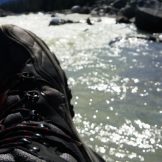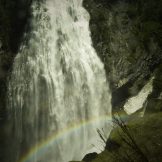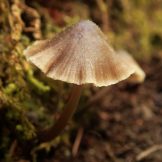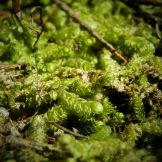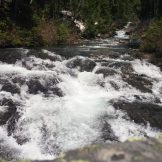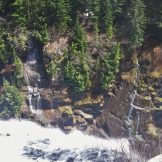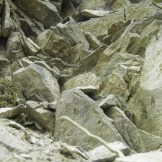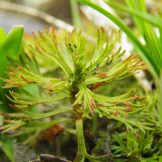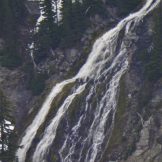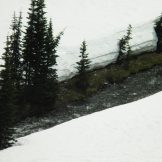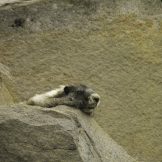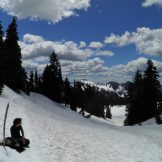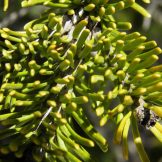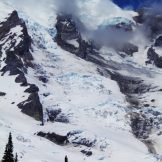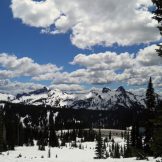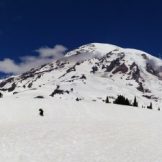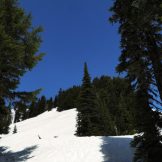My group Marshmallow Necromancers, Adele Erik and Marrissa, all studied the same areas of Mt Rainier National Park. We took an observational and “place” descriptive approach. We also practiced identifying plants and animals of the park with Poshars.
Twin Firs

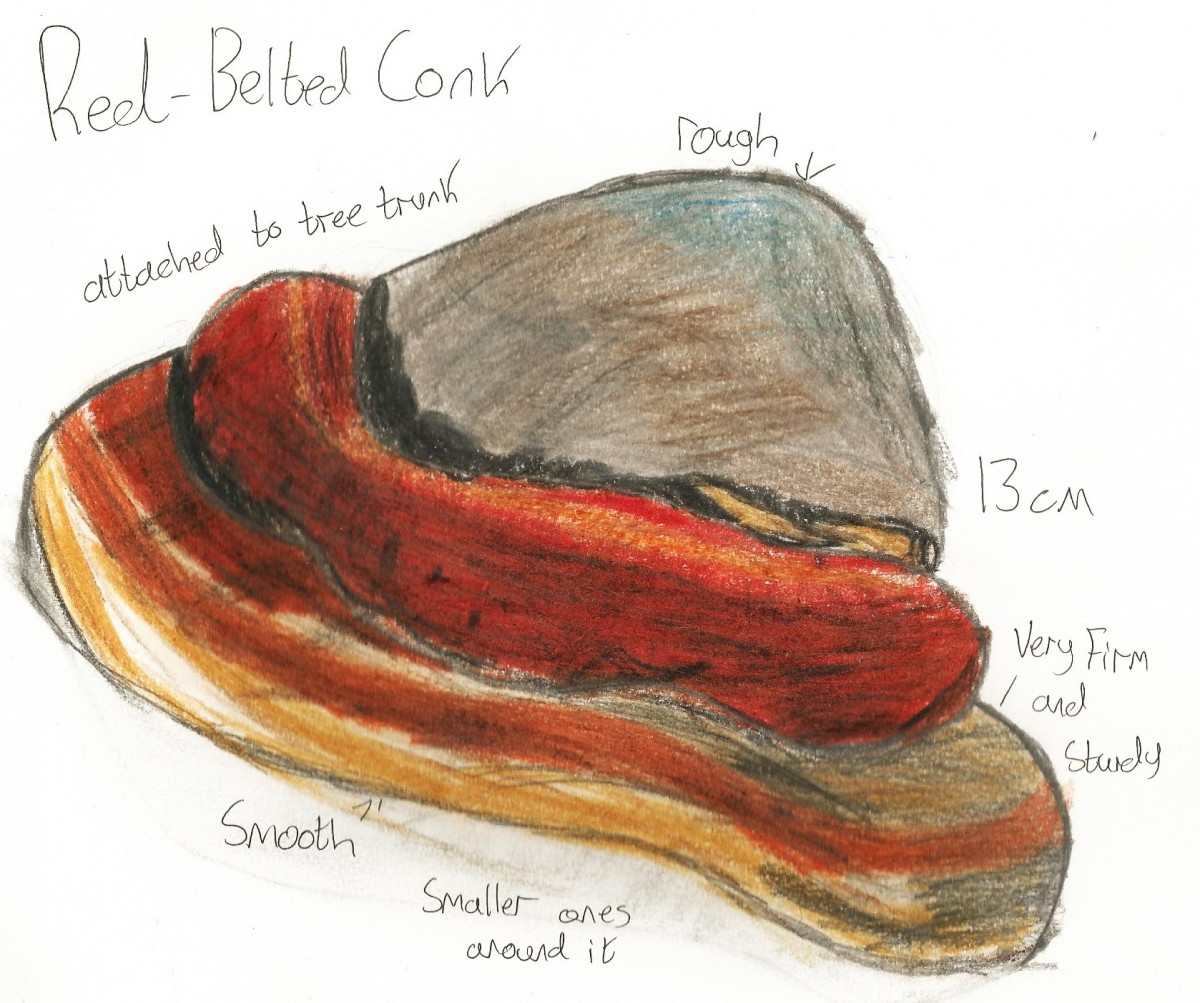
Ecosystem
Twin Firs’ ecosystem is incredible. There are giant firs, masses of ferns, TONS of awesome fungus, moss and lichen everywhere, streams, nurse logs, blooming flowers, colorful bugs, the list goes on! There is so much going on in this ecosystem, it’s so easy to just sit down and stare in awe. First of all, there is a TON of photosynthesis going on along with nitrogen fixation, so it is evident that this forest is VERY healthy. The soil is rich in nutrients and moisture. Birds and smaller animals are heard everywhere. It seems like this is one of the best environments in the national park to live. This is a great example of an Old Growth Forest. The canopy is very dense, and there is a lot of decomposition going on. The constant water flow is also vital to this forest’s success.
This place held something different than the rest. The sense of awe we got from this place was different. Wide open spaces and tall waterfalls made us feel distant and small from nature, but this place with its giant trees and dense growth made it easier to take it all in. This place should be cared about not for the resources it offers, but for the sheer fact nature had created these giant trees and many mushrooms by accident. Despite being right next to the road, you feel totally separate from human structure once you enter the trail. This is important as many people need to separate themselves, but if we over use the resources or let climate change get out of hand, these “other worldly” places will cease to exist.
Cougar Rock

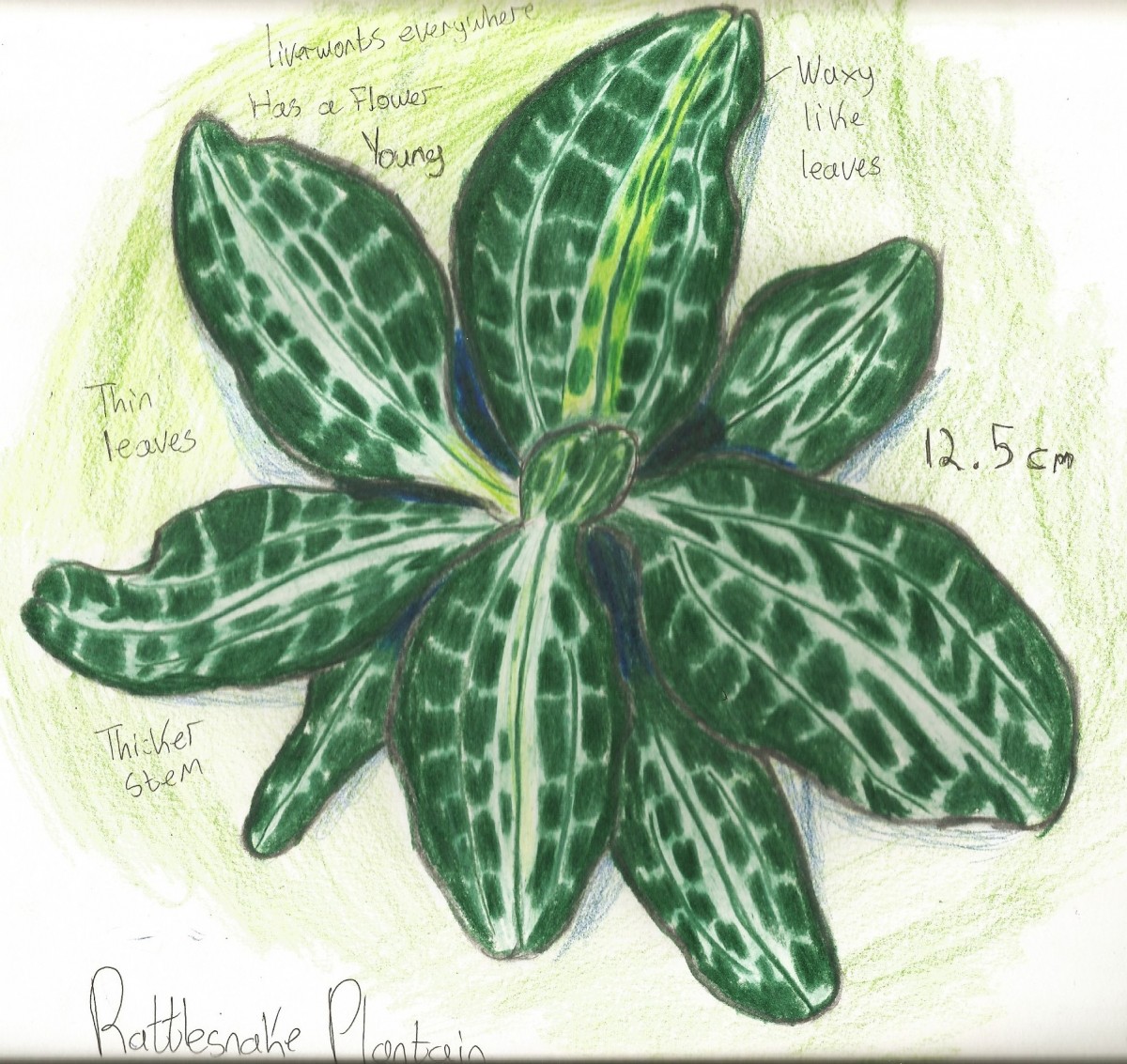
Ecosystem
This ecosystem may seem like it is very healthy, but the soil is very poor. Ash flow had hit this place hard, causing trees to grow very slowly and appear very thing despite their age. There are only a few ferns, some fungus, but a lot of moss (this is because moss can grow anywhere there is a lot of moisture). We noticed a lot of pollination happening, we saw a few bees and humming birds. We noticed that few of the animals had some human conditioning, as they approached us probably looking for food. There is a lot of lichen which mean there is nitrogen fixation going on, which can be very helpful for the trees. We also noticed a mass amount of nurse stumps and logs. These are when logs or stumps die and become nutrient rich places for other plants.
This place is a camp site, so we assume that a lot of people care about it. Even though there was pavement everywhere, I still felt like I was in an untouched forest. Once you separate yourself from the human interaction, everything seems normal. Camp grounds are great because they connect a lot of people with nature. Cougar Rock seems to offer a lot of recreation like hiking or sight-seeing. Keeping camp grounds in national parks is essential to creating a connection between nature and people.
Nisqually River

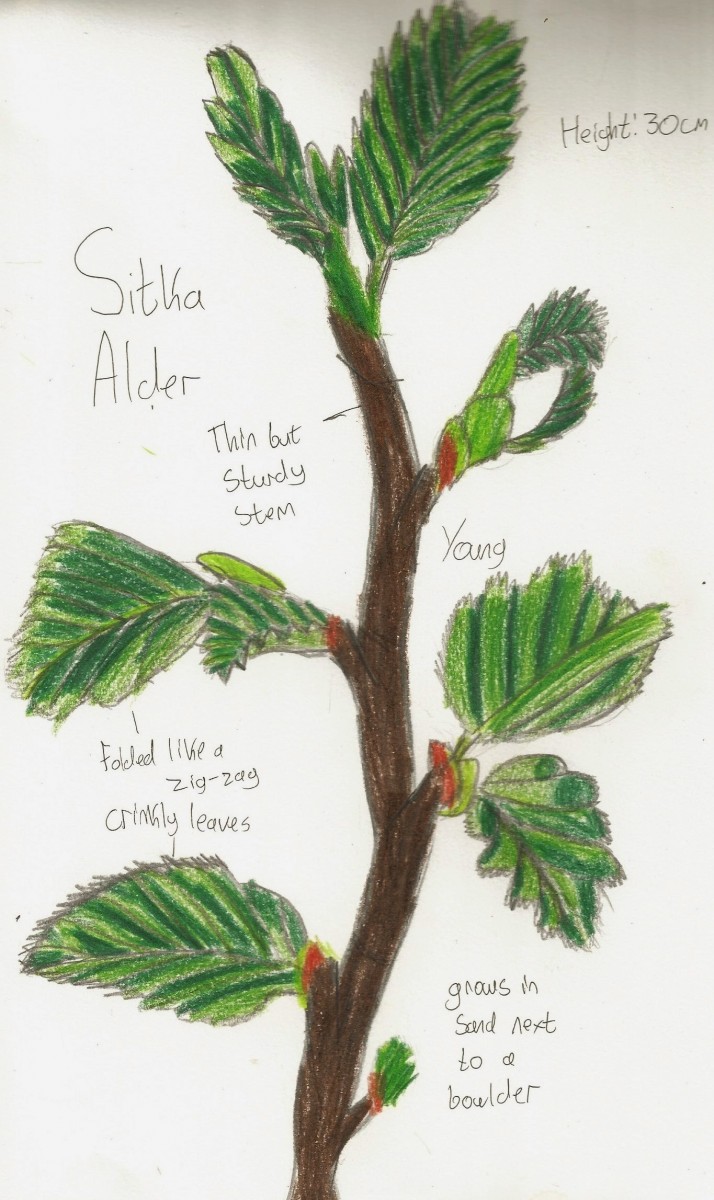
Ecosystem
This ecosystem may appear simple at first, but there is definitely a lot going on. In the river, there are salamanders swimming about in the few calmer places. Because of the river’s speed, there is a lot of erosion happening creating a mineral rich water flow. However, the topsoil of this place is very poor in nutrients. So only plants that can have deep root systems have a chance of surviving. Moss can also survive well because of the amount of moisture. The amount of rocks creates a lot of shelter for all different types of bugs. It is assumed that there are occasional rocks slides from the cliff, which could cause a lot of disruption in the ecosystem making it hard to survive. Because this environment is hard to live in, not a lot of predation is going on, but adaptions to the environment are.
Narada Falls


Ecosystem
The ecosystem of Narada falls is perfect for anything that flourishes in a place with a lot of moisture. The combination of the waterfall and wind coming in from the valley lets mist travel everywhere, you can only expect to get wet when you are near the falls. The water is very cold as it comes from glacial and snow pack melt. When we were there, there was still snow on the ground covering the path and parts of the forest. When you get past the snow, the forest is luscious with ferns, moss, lichen and old growth trees. A lot of condensation happens, so moss species especially flourish in this environment. The mass amount of lichen is a sign of nitrogen fixation, so you could say this forest is very healthy and functional. There are many examples of symbiosis happening, especially mutualism between the lichen and the trees. The environment is also perfect for fungus. Mushrooms are found all over because of the shade provided by the trees, and moisture provided by the falls. Trees are also seen clinging to the sides of the falls, but due to erosion they are at risk of falling into the pool below.
Narada falls is one of the most beautiful and captivating sights in Mt Rainier National Park. People of all ages and ethnicities make the slippery slope to get a great view of what nature has made. The Impressive beauty of the falls is unique to this spot, there was even a rainbow across the falls when we were there! The falls isn’t the only thing that is important in this place, there is a lot to be discovered in the forest surrounding the falls. The trails and look out spots offer a lot of recreational hikers, and if we don’t care about this place those experiences would be lost.
Paradise II

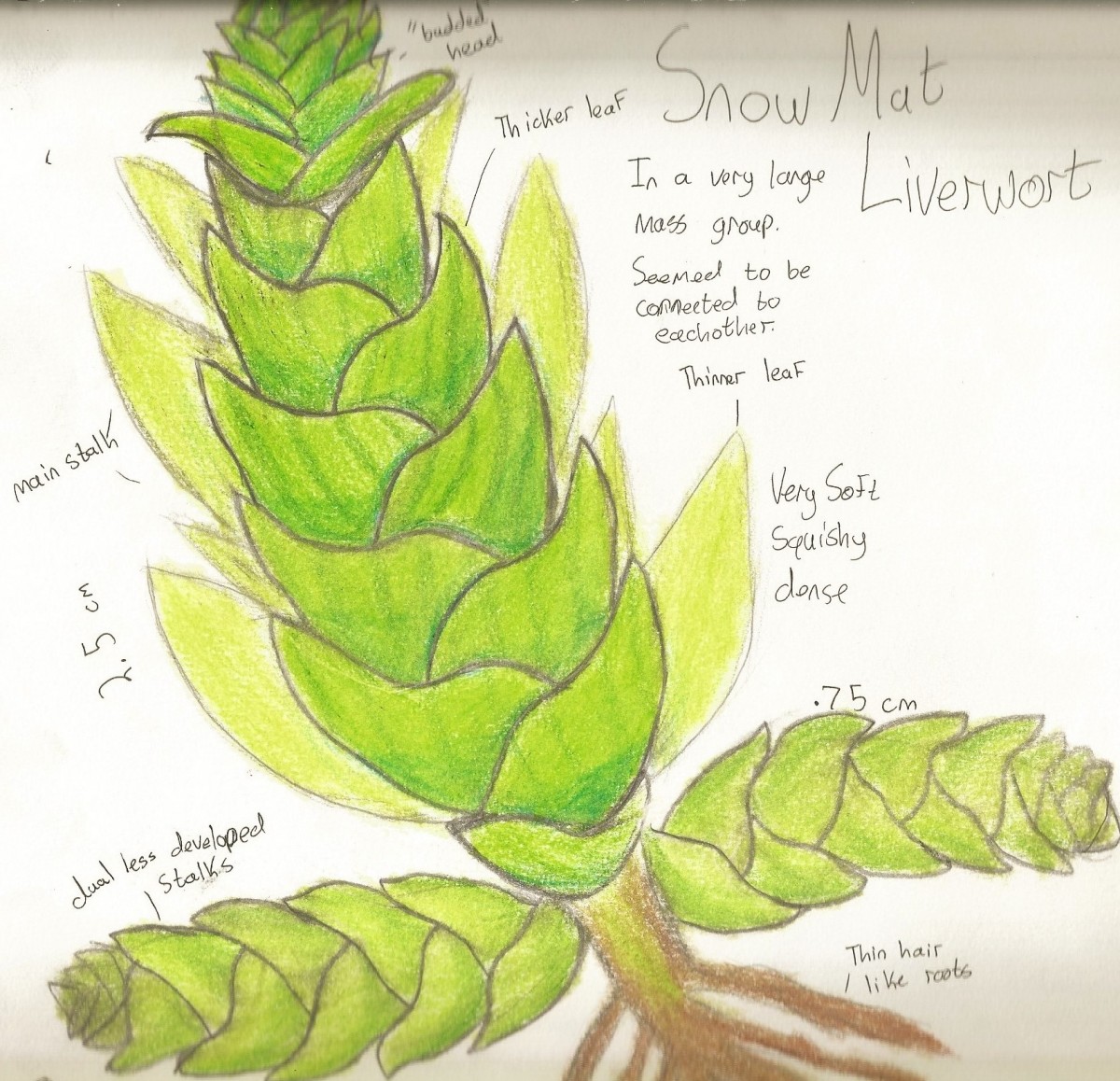
Ecosystem
The ecosystem of Paradise 2 is very dependent on the melting of the glaciers. From across the value you can see a waterfall constantly feeding down to the river that has cut a deep path underneath the snow pack. The valley is wide and stretches for a long time, being a large home to many plants and animals. Firs and Hemlocks have managed to dot and cluster everywhere and anywhere up and down the valley. Their placement is sporadic and does not really have an order. The flora and fauna in this ecosystem depend on the timing of the growth and melt of the snow packs. Animals hibernate or migrate, plants go dormant and trees depend on the tree wells when the temperatures drop. Most animals and plants have not adapted to predation or competition, but surviving the elements.
This place is important because we can learn the warning signs of Climate Change from here. With the altering timing of the snow pack melting, it is obvious that the planet is warming just from looking at this place. The beauty this place brings, the Tatoosh range, the valley, the flowers, the wildlife, all these things are too precious to have second thoughts about. Not only do we as Americans value these, but this place brings a lot of attraction from people all over the world. While we were visiting Paradise, we hear a plethora of languages. The national parks are one thing that America has to be really proud of, and we are seeming to ignore them.
Paradise I
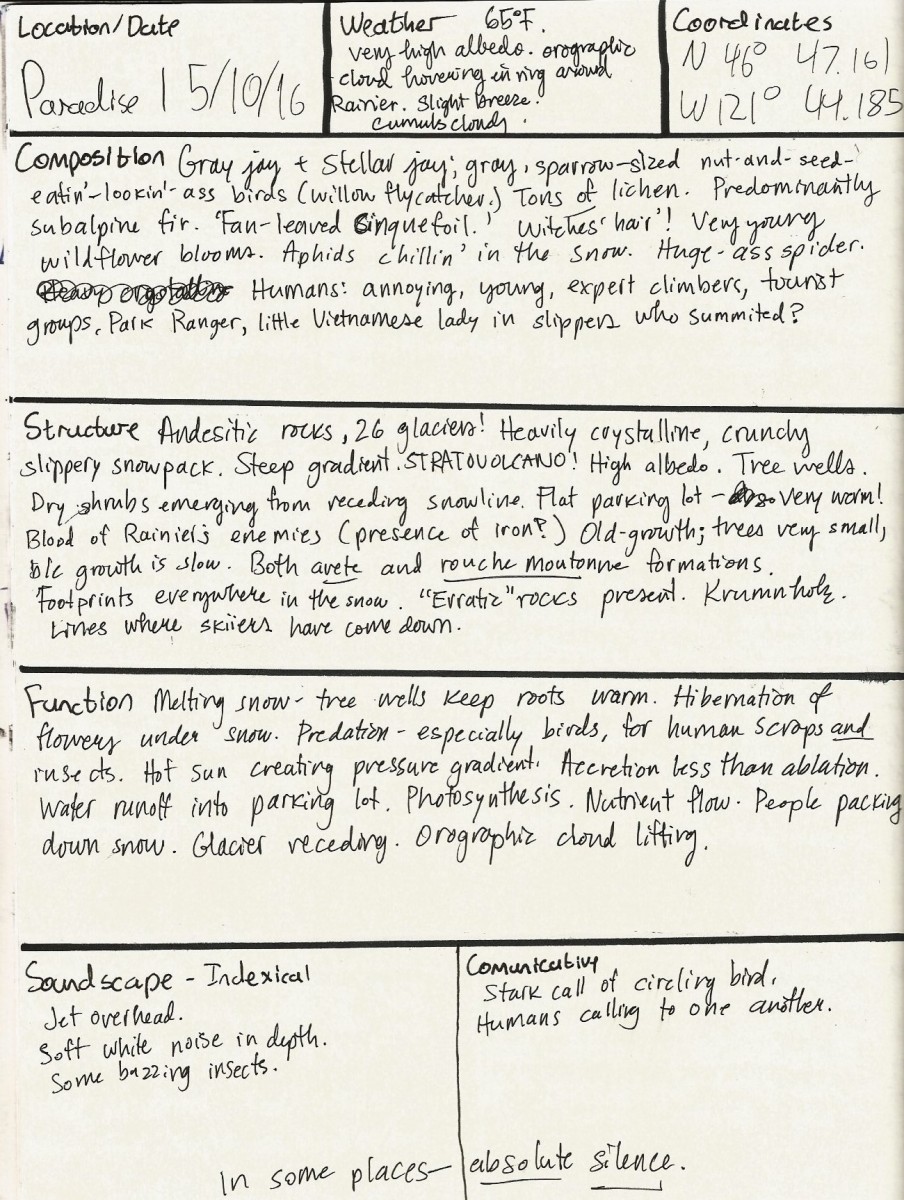
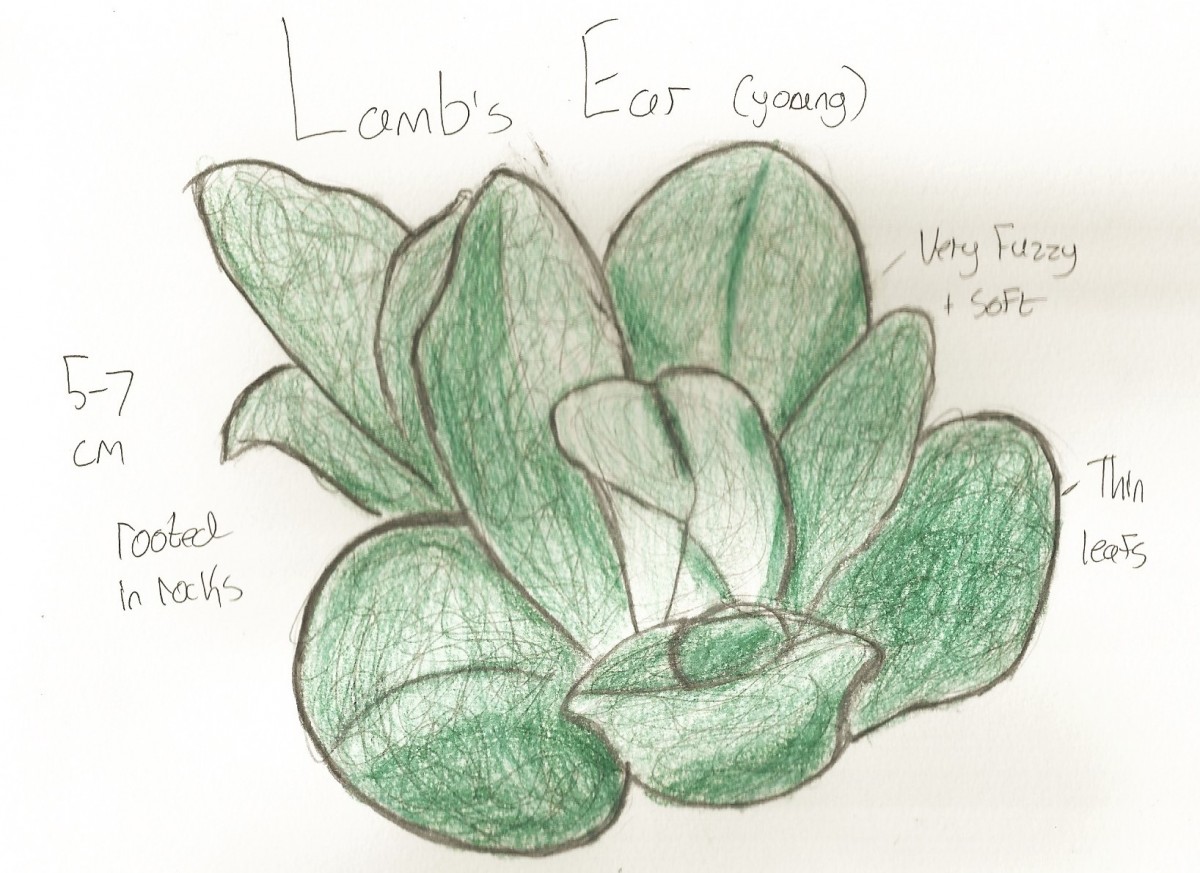
Ecosystem
The ecosystem of Paradise 1 changes drastically with the seasons. During the winter, most of the plants are covered in thick packs of snow and have adapted accordingly to surviving those long frozen winters. Plants can survive icy times by adapting at the cell level. Some plants create a surplus of solutes to depress freezing, this is like putting salt on ice. Some plants create “antifreeze” like proteins or create the protein dehydrins. Some plants can even generate their own heat! Trees also survive these winters because of the phenomenon of tree wells. This can actually help in insulating the tree at its roots so it can stay warm. These plants also depend on the timing of the melting of the snow packs and glacial melt. Typically, this happens at the beginning of the summer, and this gives them enough time to bloom and pollinate, furthering their species survival before the next snow fall happens. [source: http://www.howplantswork.com/2010/01/07/how-plants-survive-the-cold-or-not/ ]
We should care about this place because there is a lot to know study and know about the Alpine Zone. The problem with this type of ecosystem, is that it is very subject change especially when rising temperature is involved. The beautiful thing about this ecosystem is the melting of the glacier on Mt Rainier effects multiple ecosystems in the surrounding area. It’s almost like a keystone ecosystem! If the timing of the glacial melt alters to greatly, things could go haywire for the plants and animals. The iconic blooming wildflowers of Mt Rainier could be lost to us if things get to out of the cycle. People around the world value seeing this part of Paradise during any season, be it skiing, sledding, hiking or seeing the wildflowers. Preserving this place mean preserving a culture and an environment that is extremely unique.
